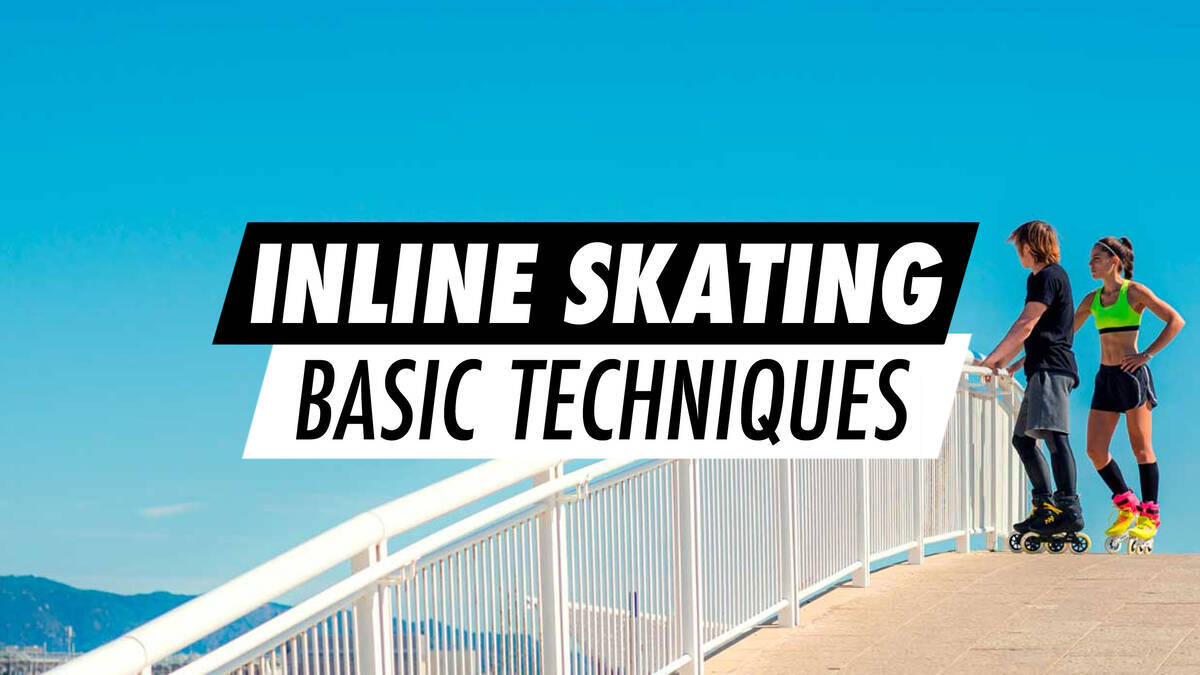Inline Skating: Essential Skills

Mastering inline skating involves developing a solid stance, learning to stop effectively, smooth turning, and understanding how to fall safely. This guide covers all the basics you need as a beginner in inline skating.
Inline skating is suitable for everyone—no matter your age or size. All you require is a pair of inline skates, some protective gear, and a smooth, traffic-free surface. Although the initial learning stage can be challenging, consistent practice will lead to improvement within a few hours. Keep at it!
Overview
Getting the Right Stance on Inline Skates
To maintain proper form on your inline skates, ensure your knees are bent. Bending your knees lowers your centre of gravity, assisting with balance.
Your feet should remain parallel and pointed directly forward, not angled inward or outward.
With your knees bent, feet parallel, and upper body slightly leaning forward, you should be steady and balanced.
Watch our instructional video, How to Skate on Inline Skates:
Stopping Techniques for Inline Skates
The brake pad and T-stop technique are two methods for stopping on inline skates.
Applying the Brake Pad on Inline Skates
Using the brake pad involves pushing the skate with the brake pad ahead and lifting your toes to engage the pad with the ground, slowing you down. This allows you to control your speed or come to a halt completely. Beginners should become familiar with the brake pad to ensure control.
T-Stop Technique on Inline Skates
The T-stop requires placing one foot behind you and dragging the wheels on the ground at a right angle to the other foot, creating a T-shape. Continue dragging the wheels until you stop completely. To execute a T-stop, balancing on one foot while in motion is necessary.
The T-stop lets you stop using only your wheels, without needing a brake pad. This is an advantage, as brake pads can sometimes hinder. Beginners will benefit from learning the T-stop to enhance their control over their inline skates.
Both techniques are detailed in our video guide, How to Stop on Inline Skates:
Turning While Inline Skating
While turning on inline skates, adopt a slight forward lean and keep your knees bent. To turn left, move your left foot slightly ahead, and do the opposite for a right turn. Shift your weight toward the turn and lean in with your upper body. Looking in the direction of your turn can be very helpful.
Focusing on your turning skills can prevent common beginner errors and pave the way for learning the cross-over turning technique as you progress.
Safely Falling on Inline Skates
It's always better to fall forward to control the fall and avoid injuring the back of your head or tailbone.
If you're losing balance, try these steps:
- Crouch and lean forward—being low keeps you close to the ground, reducing fall impact. You may even regain control.
- Let protective gear absorb the fall—knee, elbow, and wrist pads can cushion the impact. If you're moving quickly, slide on your gear to prevent grazes.
Applying these methods minimizes injury risk, allowing you to continue improving on your inline skates.
Choosing Ideal Inline Skates for Beginners
Both novice and experienced inline skaters should ensure their skates fit well and offer comfort. Beginner skates should include a heel brake and provide strong ankle support. The wheels should be soft (76A - 84A range) and appropriately small—84 mm or less for large-footed adults, and under 70 mm for children.
Explore our guides for more insights on purchasing inline skates:
